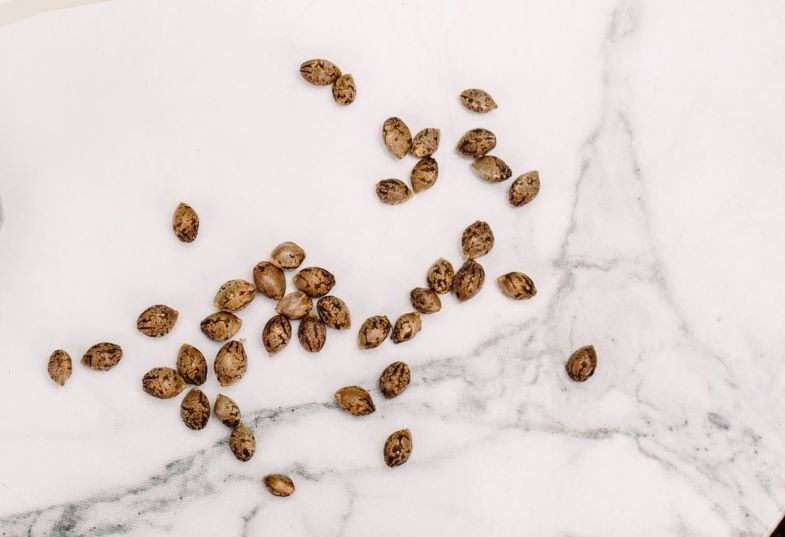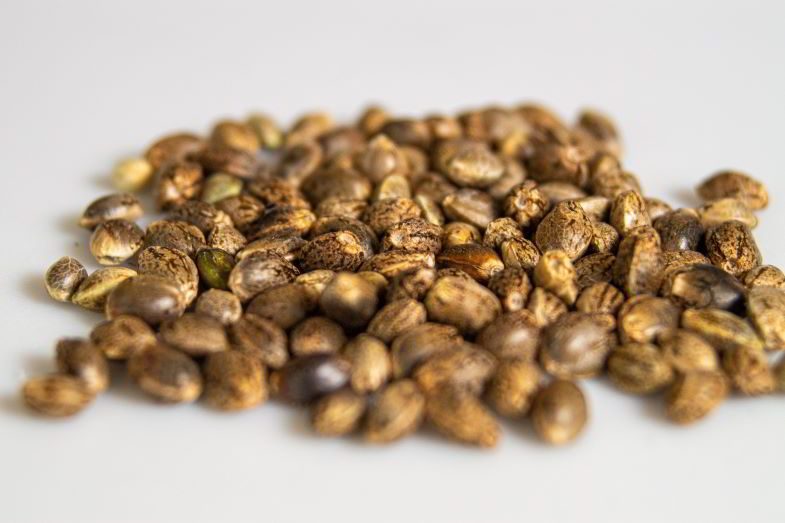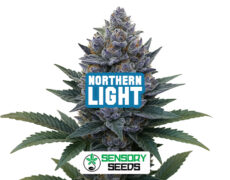Published on: 17/10/2025
Complete Guide to Cultivating THC Cannabis Seeds: Advice, Techniques, and Insights for Quality Harvests
Today, cannabis cultivation is an increasingly popular activity, both for personal use and for those approaching the plant out of curiosity or for therapeutic purposes. Among the many strains available on the market, THC cannabis seeds stand out as an ideal choice for those looking to grow buds rich in tetrahydrocannabinol, the cannabinoid responsible for the plant’s psychoactive effects.
Growing high-quality plants requires specific knowledge, patience, and targeted techniques. In this article, we will explore everything you need to know about THC cannabis seeds, from the different types available to practical tips for ensuring successful cultivation.
What are THC cannabis seeds?
THC cannabis seeds are specifically selected to produce plants with a high content of tetrahydrocannabinol (THC), the main cannabinoid responsible for the psychoactive effects of cannabis, influencing perceptions, physical sensations, and mood. The THC level in the flowers depends not only on the plant’s genetics but also on the cultivation techniques used and the environmental conditions in which it grows.
These cannabis seeds, whether feminized cannabis seeds or not, can be chosen both for personal cultivation and for collectible purposes, and they form the basis for plants capable of developing intense aromas, abundant resin, and high-quality flowers. Beyond THC content, each seed carries specific traits, such as flowering time, resistance to diseases, plant structure, and overall yield. A thorough understanding of these characteristics is essential for properly planning cultivation and ensuring results that meet your expectations.


Types of Cannabis Seeds: Autoflowering, Feminized, and Fast Flowering
Cannabis is not a uniform plant: there are different types of hemp seeds, each designed to meet specific needs and objectives. Knowing the characteristics of each seed type is essential to choose the one best suited to your space, experience, and desired outcome.
- Autoflower seeds: these plants begin flowering automatically after a short vegetative period, without depending on the light cycle. They are particularly suitable for growers with limited space or little experience, as they require fewer interventions and allow for quick harvests. The plant’s compact size and ease of management make autoflowering seeds an ideal choice for those seeking fast and reliable cultivation.
- Feminized seeds: designed to produce exclusively female plants, these seeds eliminate the need to identify and remove male plants. They are highly valued by experienced growers for their high yield and consistent quality of the flowers. The structure of feminized plants allows for more precise management, optimizing space, light, and nutrients to produce dense and aromatic buds.
- Fast-flowering seeds: similar to autoflowering seeds in terms of flowering speed, these plants retain photoperiod characteristics, allowing greater control over the growth cycle. They are ideal for growers who want quick harvests without giving up the ability to customize vegetative and flowering periods. Fast-flowering seeds combine speed, yield, and control, offering a versatile solution for intermediate or advanced cultivators.
Each type of seed brings specific advantages: autoflowering seeds ensure simplicity and speed, feminized seeds provide uniformity and consistent flower quality, while fast-flowering seeds combine rapid growth with customizable control over the growth cycle. Choosing the most suitable seed should take into account the grower’s experience, available space, and production goals, allowing for the maximization of yield, aroma, and overall quality of the final product.
Where to Successfully Grow THC Cannabis Seeds
The location where THC marijuana seeds are grown plays a crucial role in plant growth and the final quality of the flowers. Choosing between indoor and outdoor cultivation affects not only the size and yield of the plants but also the aromatic profile and THC content. Each environment presents specific advantages and challenges, and understanding these differences is essential for planning a successful cultivation.
- Indoor Cultivation: Growing THC cannabis indoors allows complete control over all environmental factors, including light, temperature, humidity, and ventilation. Spaces such as grow boxes, home greenhouses, or cultivation cabinets enable lighting regulation through LED or HPS lamps, ensuring a stable photoperiod and optimal climate conditions. This method reduces the risk of environmental stress and protects plants from external agents such as rain, wind, insects, or fungal diseases. Indoor cultivation is ideal for those aiming to maximize bud quality, control THC content, and achieve consistent yields regardless of weather conditions. Additionally, the enclosed environment allows experimentation with advanced techniques such as targeted pruning, branch training, and the use of specific fertilizers without the uncertainty of external climate.
- Outdoor Cultivation: Growing outdoors allows for larger plants and potentially higher yields, but requires careful management of soil, irrigation, and protection from pests, diseases, and climatic variations. Outdoor plants thrive in regions with long, warm summers, sunny days, and fertile soils, and can be supplemented with light greenhouses or temporary covers to reduce the risk of damage from rain, wind, or sudden frosts. Outdoor cultivation enables plants to develop naturally, fully utilizing sunlight and soil resources, but demands constant monitoring and timely interventions to maintain plant health and bud quality.
In any context, whether choosing indoor or outdoor cultivation, it is essential to use quality substrates, ensure proper drainage, and provide balanced nutrients, while regularly monitoring plant health. The cultivation environment directly influences vegetative growth, bud development, aromatic profile, and THC concentration. A careful choice of cultivation location, combined with attentive management, represents the first step toward obtaining healthy, productive, and aromatically rich plants.
Read also: 5 hemp seeds for this winter


How to Successfully Grow THC Cannabis Seeds
Growing THC cannabis seeds requires constant and meticulous attention at every stage of the plant’s life cycle, from germination to harvest. The final quality of the buds, THC content, and overall aroma largely depend on the care given throughout the entire process, including the chosen environment, nutrients used, and management of light, water, and ventilation. Understanding the specific needs of each seed type and variety is essential to achieve consistent and satisfying results.
Germination: The first stage of the cultivation cycle is germination, when the seed develops its embryonic root. Seeds should be placed in a warm and humid environment, such as slightly damp paper towels or a light, well-draining substrate. It is crucial to avoid waterlogging, as excess moisture can promote mold or rot, and to maintain stable temperatures, avoiding fluctuations that could compromise germination. A healthy, properly germinated seed produces a vigorous root, forming the foundation for a robust and productive plant. At this stage, delicacy is essential: even small mistakes in water or temperature management can jeopardize the entire cycle.
Vegetative Growth: Once germinated, young seedlings enter the vegetative phase, during which they require intense light, regular watering, and balanced nutrients. Autoflowering plants need a short vegetative period, typically two to three weeks, while feminized or fast-flowering varieties benefit from a longer vegetative phase, essential for developing structure, branching, and resilience. Closely monitoring branch growth is crucial: if needed, strategic pruning or supports can be applied to evenly distribute light and air, promoting balanced canopy development. Choosing a suitable substrate with effective drainage prevents water stress or nutrient deficiencies, which could compromise growth and the final yield of the buds.
Flowering: The flowering phase is the central stage in cultivating THC cannabis seeds, as it is when the plants begin producing dense, resin-rich buds. Controlling temperature, humidity, and ventilation is essential to prevent mold, pests, and other issues. Photoperiod varieties require a consistent light cycle to properly trigger flowering, while autoflowering plants bloom according to their independent genetic cycle. Using bloom-specific fertilizers, rich in phosphorus and potassium, can increase bud density and quality, enhancing both the aromatic profile and THC content. During this phase, careful observation allows for timely intervention in case of stress, deficiencies, or infestations, ensuring optimal and uniform harvests.
Harvesting and Drying: Harvesting is a crucial moment, as it directly determines the final quality of the buds. The flowers should be carefully cut, removing excess leaves, and then dried slowly in ventilated environments with controlled temperature and humidity to preserve aroma, potency, and resin. The subsequent curing process allows the flavor, aromatic profile, and THC intensity to mature, completing the cultivation cycle and maximizing the consumer’s sensory experience. Patience is essential: rushing the drying or curing process can compromise the quality, resin, and aroma of the buds.
Attention to Detail: Factors such as soil pH, the frequency and amount of watering, and the management of light and ventilation make the difference between ordinary harvests and high-quality buds. Constant observation and timely intervention in cases of stress, nutrient deficiencies, or disease ensure uniform growth and premium flowers. The grower’s experience, dedication, and ability to adapt to the specific needs of the plants are crucial for producing buds rich in THC, complex in aroma, and visually appealing.
In conclusion, successfully cultivating THC cannabis seeds means understanding every stage of the plant’s life cycle, carefully planning the growing environment, and attending to every detail from seed to harvest. Only through attention, consistency, and patience is it possible to achieve healthy plants, high-quality buds, and optimal THC content, turning cultivation into a rewarding and safe experience.
Conclusion
Successfully cultivating THC cannabis seeds requires a balance of knowledge, patience, and attention to detail. Choosing the most suitable genetics, understanding the differences between autoflowering, feminized, and fast-flowering seeds, and selecting the ideal growing environment are essential steps to achieve vigorous plants, resin-rich buds, and consistent harvests over time.
Consistent dedication throughout all growth stages—from germination to vegetative growth, flowering, harvesting, and curing—allows you to optimize not only yield but also aroma, potency, and the overall quality of the buds. Paying attention to every detail, from the substrate to light and nutrient management, makes the difference between ordinary plants and high-level cultivation.
With the right strategies and a methodical approach, cultivating THC cannabis can become a highly rewarding and productive experience. Each seed represents potential to be nurtured: by carefully observing the plants’ needs and intervening precisely when necessary, it is possible to achieve excellent results, making every cultivation a lasting success, satisfying for both beginners and experienced growers.








